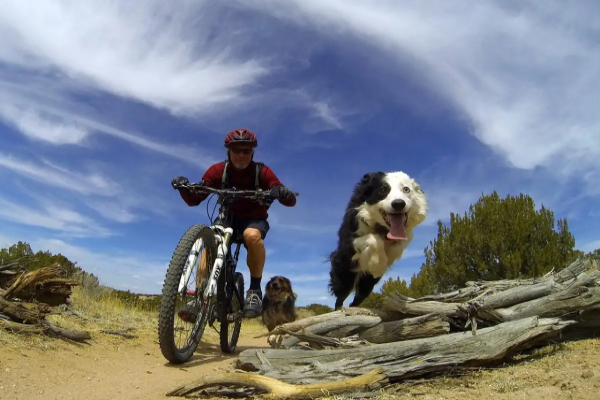Mountain biking is an exhilarating sport. Riders tackle rough terrains and steep descents. The thrill is unmatched. However, with great excitement comes great risk. One of the many terms riders use is “dead sailor.” This term might sound strange to non-riders. However, it’s a crucial concept in mountain biking.
Mountain biking is a sport of skill and adrenaline. Riders navigate trails, jump obstacles, and perform stunts. The dead sailor is a term every rider must understand. It refers to a state of rider inactivity during a jump. The rider freezes and loses control. This can lead to crashes and injuries.
The Origins of the Term
The term dead sailor has nautical roots. Sailors would sometimes freeze in fear during storms. They would become unresponsive, much like a “dead sailor.” In mountain biking, the term captures the same idea. Riders become paralyzed mid-air, leading to potential disaster.
Why It Happens
Understanding why dead sailors happen is essential. Several factors can contribute:
- Fear: Fear is a natural response. Even experienced riders can freeze if a jump feels too big or risky.
- Lack of Experience: Novice riders are more prone. They might not have the skills to handle mid-air adjustments.
- Poor Technique: Bad habits can lead to dead sailors. Not maintaining proper body position or bike control can result in freezing.
- Environmental Factors: Unexpected changes in the trail can surprise riders. Sudden obstacles or wind gusts can lead to a dead sailor.
Impact on Performance
Dead sailors impact more than just a single jump. They affect overall performance. Riders who frequently experience dead sailors might lose confidence. This can lead to a vicious cycle. Fear of dead sailors can cause more dead sailors. Breaking this cycle is crucial for progress.
Safety Concerns
The primary concern with dead sailors is safety. Freezing mid-air often leads to crashes. These crashes can be severe. Broken bones, concussions, and other injuries are common. Understanding how to avoid dead sailors is vital for any rider’s safety.
Preventing Dead Sailors
Preventing dead sailors involves a combination of physical and mental strategies:
- Building Confidence: Confidence is key. Riders should practice on smaller jumps. Gradually increasing difficulty helps build confidence.
- Improving Technique: Proper technique reduces the risk. Riders should focus on maintaining an active stance. Keeping the body loose and ready to react is crucial.
- Mental Preparation: Visualization can help. Riders should visualize successful jumps. This mental practice can reduce fear.
- Equipment Check: Properly maintained equipment can make a difference. A well-tuned bike is easier to control.
Training Exercises
Several exercises can help riders avoid dead sailors:
- Balance Drills: Balance is crucial. Practicing balance drills can improve control.
- Jump Practice: Practicing jumps on safe terrain builds skill.
- Core Strengthening: A strong core helps maintain control mid-air.
- Reaction Time Drills: Quick reactions can prevent freezing. Drills that improve reaction time are beneficial.
The Role of Instructors
Instructors play a vital role. They can provide guidance and feedback. Watching experienced riders can also help. Learning from others’ techniques can be beneficial.
Common Misconceptions
Several misconceptions exist about dead sailors. One is that only beginners experience them. This is false. Even seasoned riders can face dead sailors. Another misconception is that dead sailors are solely due to fear. While fear is a factor, other elements like technique and environment also play a role.
Case Studies
Examining case studies can provide insight. Many professional riders have shared their experiences. Analyzing these can help understand the causes and solutions.
The Psychological Aspect
The mental aspect of riding is significant. Fear, anxiety, and pressure can contribute to dead sailors. Addressing these mental challenges is crucial. Techniques like mindfulness and meditation can help.
Overcoming Fear
Overcoming fear is a process. Riders should gradually push their limits. Setting small, achievable goals can build confidence. Celebrating successes, no matter how small, is important.
See Also: How to Gain Confidence Mountain Biking
The Role of Equipment
Equipment plays a role in preventing dead sailors. A well-maintained bike responds better. Proper gear, like helmets and pads, can reduce injury risk. Riders should regularly check and maintain their equipment.
Learning from Mistakes
Mistakes are part of learning. Analyzing what went wrong in a dead sailor incident can provide valuable lessons. Riders should use these experiences to improve.
Community Support
The mountain biking community is supportive. Sharing experiences with others can help. Learning from fellow riders’ mistakes and successes is beneficial.
Advanced Techniques
As riders progress, they can learn advanced techniques to prevent dead sailors. Tricks like whipping the bike or adjusting mid-air can be learned. These require practice and confidence.
Conclusion
Understanding and preventing dead sailors is crucial in mountain biking. By building confidence, improving technique, and addressing mental challenges, riders can avoid these incidents. The goal is to enjoy the thrill of the ride safely.

